The "best" way to measure battery capacity is by current and voltage monitoring during both charge and discharge and subsequent calculation - versions of this are generally known as "gas gauging". For almost all applications current monitoring is enough for capacity measurement.
Voltage alone can give some indication but "has problems":
Here are some discharge curves - these are for a std LiIon cell but results will be similar for a Lithium Polymer ("LiPo"). Curves shown here (not a n easy to read graph :-( ) are 1C, 0.5C and 0.2C but a similar family of curves exists up to whatever C capacity will tolerate.
Using a low discharge rate or no discharge to read the cell voltage is liable to give you less accuracy, not more. Compare the 0.2C and 1C curves. The low discharge curve is muc flatter across the middle of the capacity range. Between say 90% and 95% exhausted the rate of change is still much the same as from 40% to 90% BUT for the 1C discharge the rate of decline in voltage is now much steeper. Monitoring the 1C curve would give you a good idea of where you were from about 90% on, whereas the low discharge curve is up to about 96% before things "start to get alarming".
BUT these curves are for one temperature and battery temperature can have a significant effect and will depend on ambient temperature and recent discharge history and also cycle life of cell and probably calendar life as well.
Below: Typical lithium Ion 1 cell 'battery' discharge curve.

Gas gauging takes a bit more effort to get going but is liable to be more accurate for any degree of effort once operational.
The normal approach is just measuring current in & current out, and a LiIon battery (including LiPo) ic close to 100% efficient in that respect. Many ICs exist to do that
An example only is the cheapest in stock at Digikey at $2.801 is STC3100. This is I^2C controlled. Designed to operate at up to 2.5 Amp but could be scaled to higher currents with different sense resistor.
They say
■ Battery voltage monitoring
■ Internal temperature sensor
■ Coulomb counter with 12/14-bit AD converter, +/- 80 mV input voltage range
■ Internal or external 32768 Hz time base
■ I2C interface for gas gauge monitoring and
device control
■ 32-RAM bytes
■ 8-byte unique device ID
■ One general-purpose I/O
And
The STC3100 monitors the critical parameters of
a single-cell Li-Ion battery (voltage, temperature
and current) and includes hardware functions to
implement a gas gauge for battery charge
monitoring, based on a programmable 12- to
14-bit A/D converter. With a typical 30 milliOhms
external sense resistor, the battery current can be
up to 2.5 A and the accumulator system provides
a capacity up to +/-7000 mAh with a resolution of
0.2 mAh
From the above data sheet


